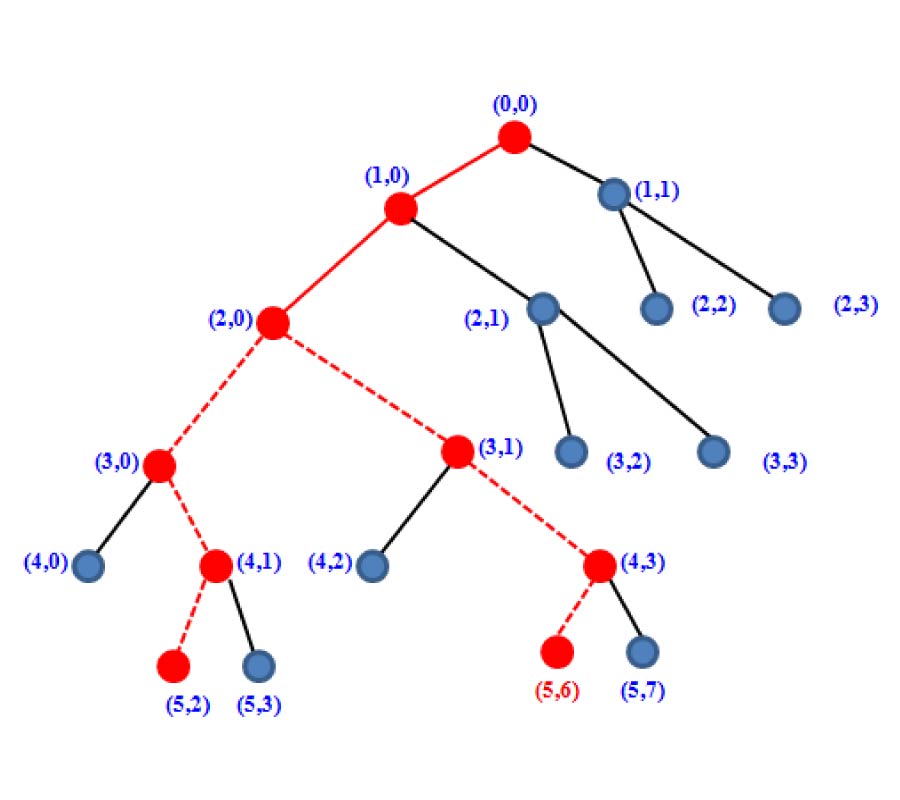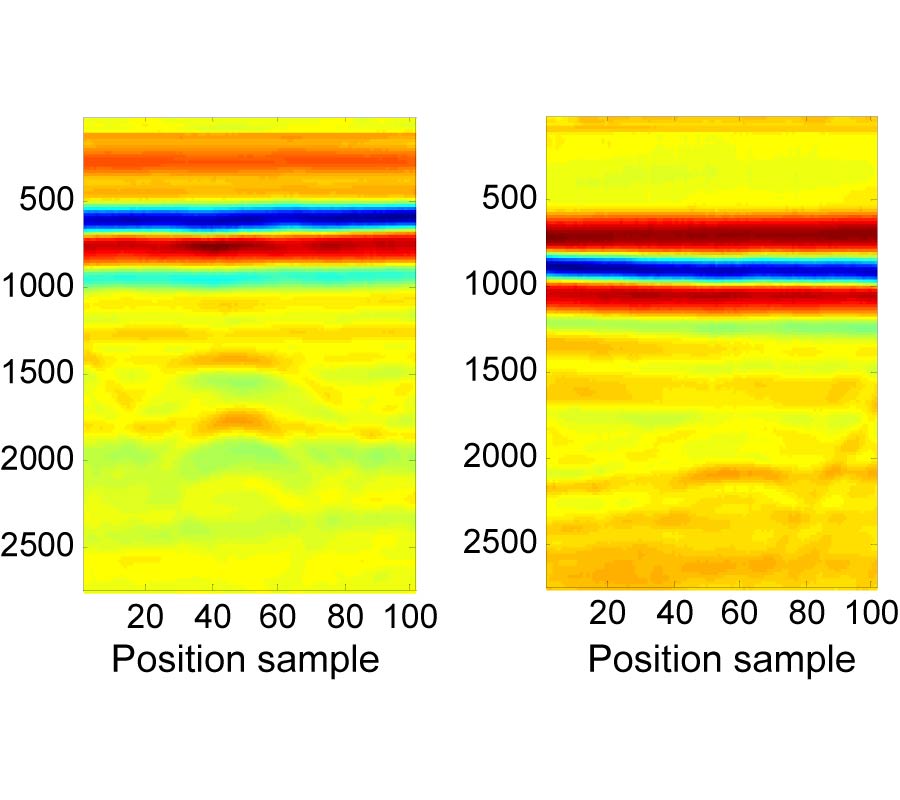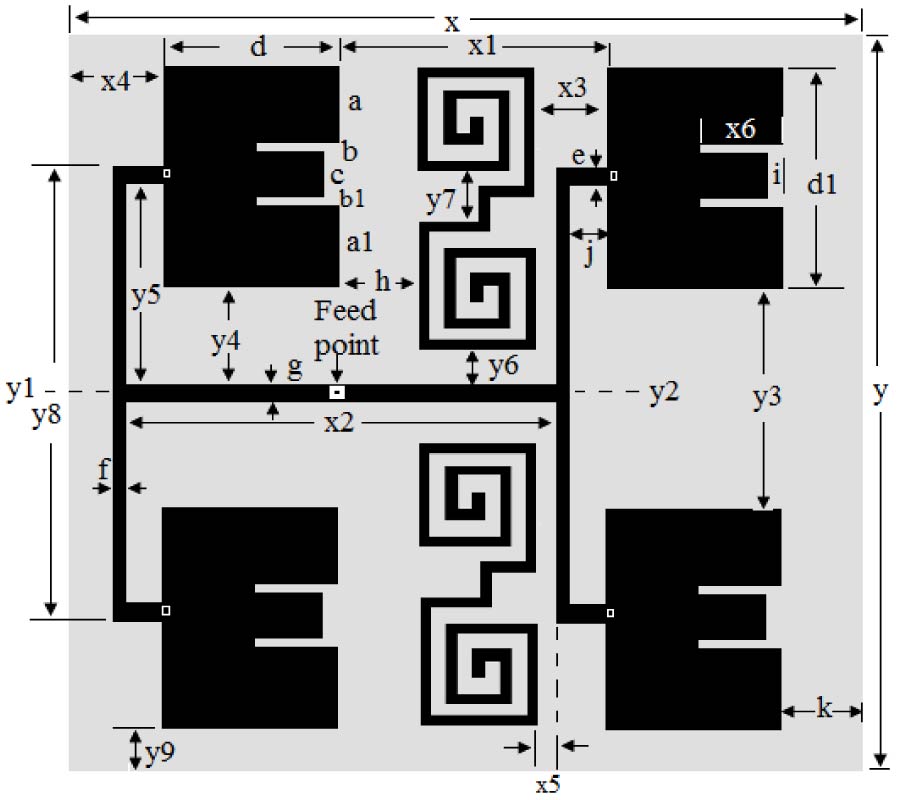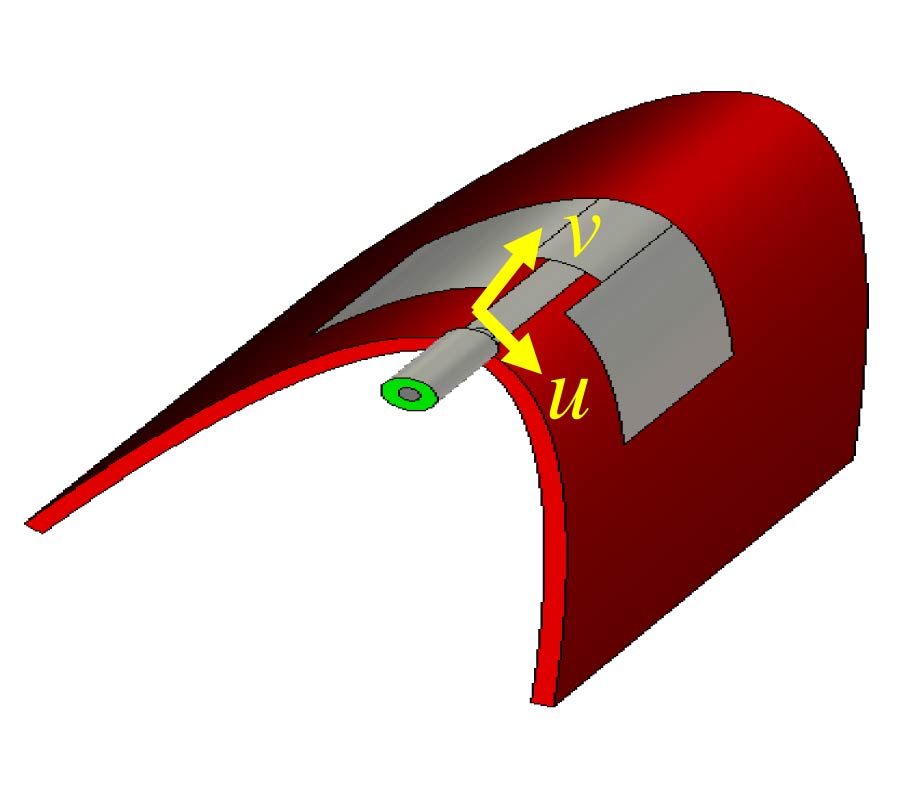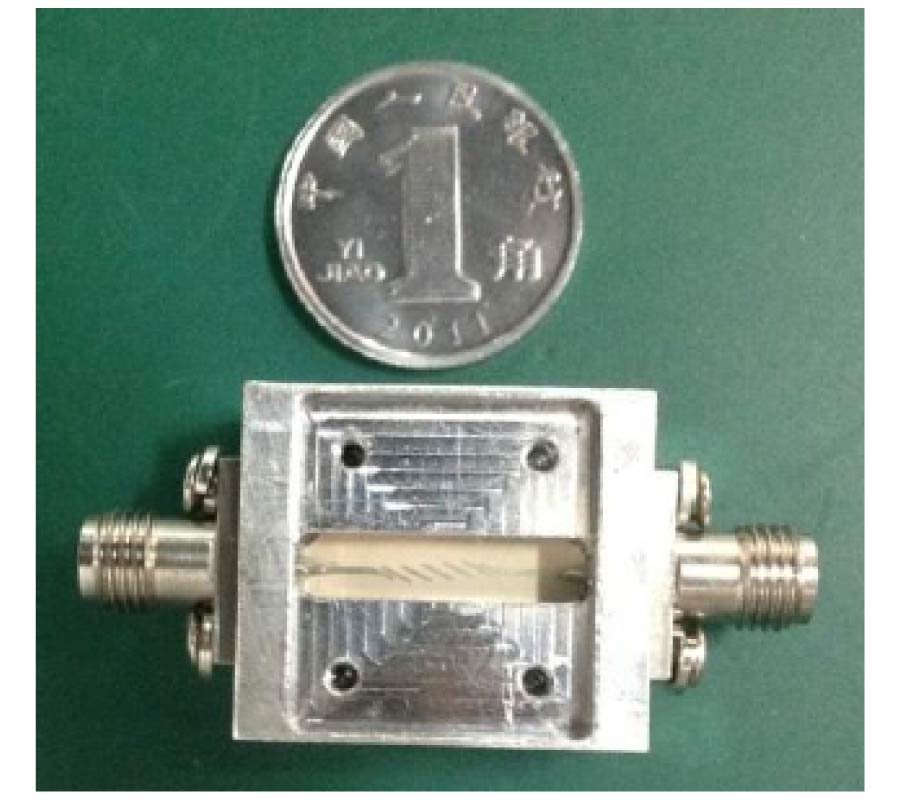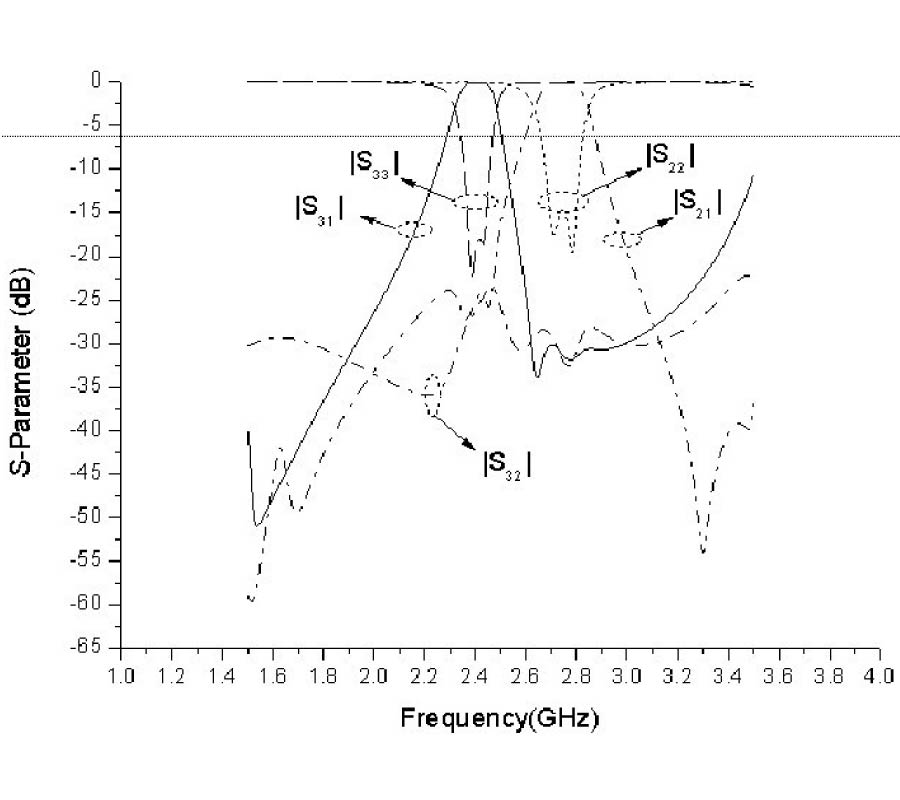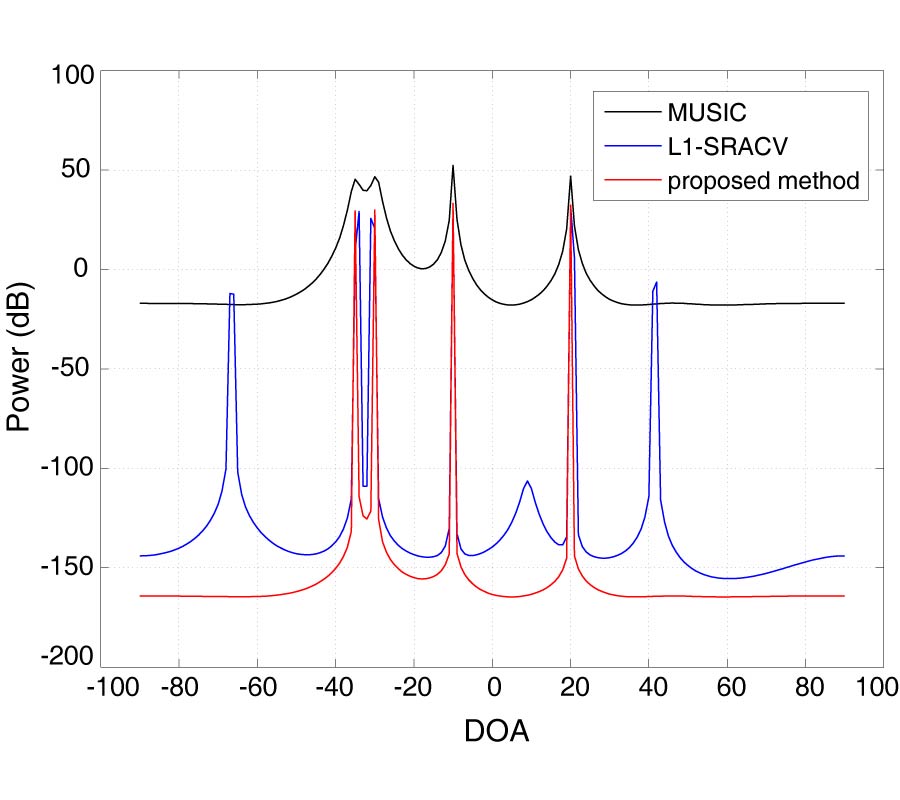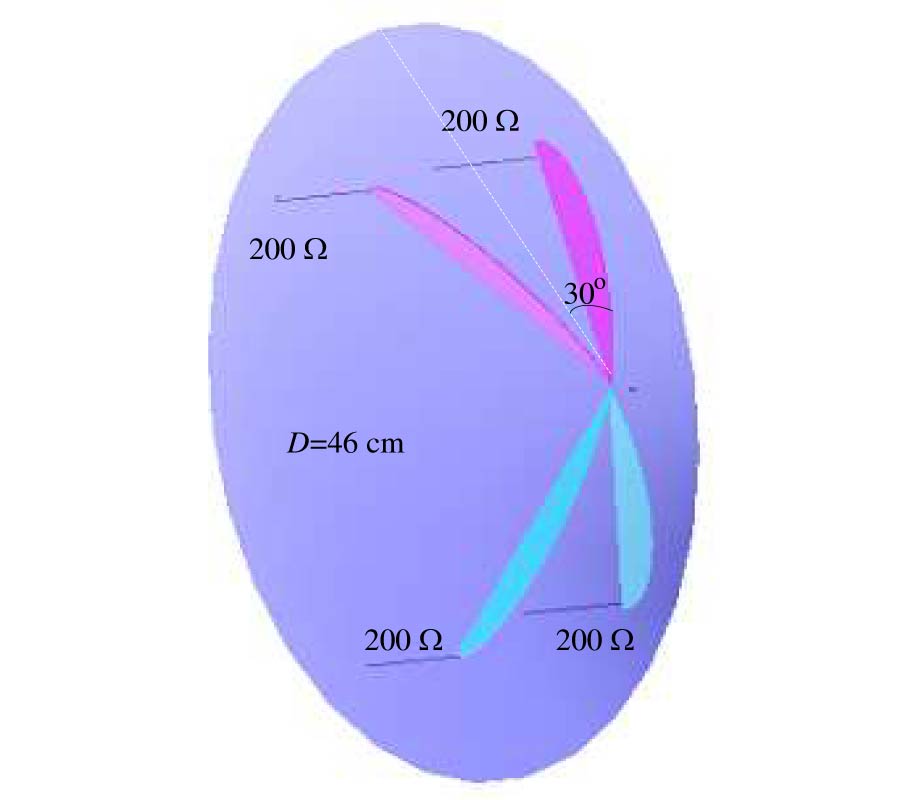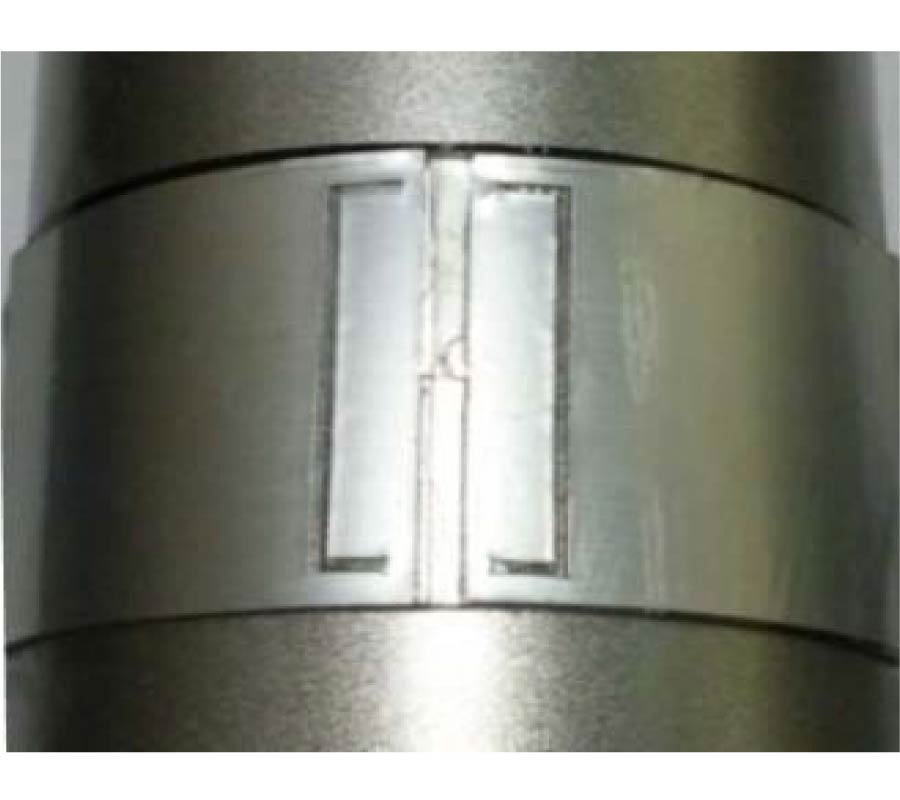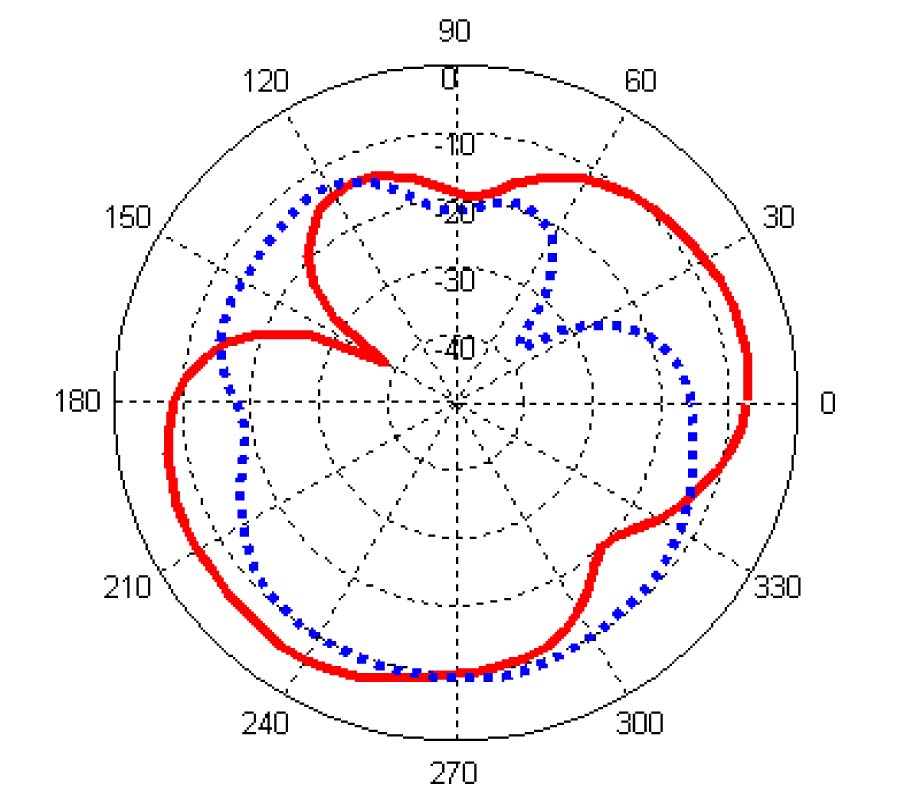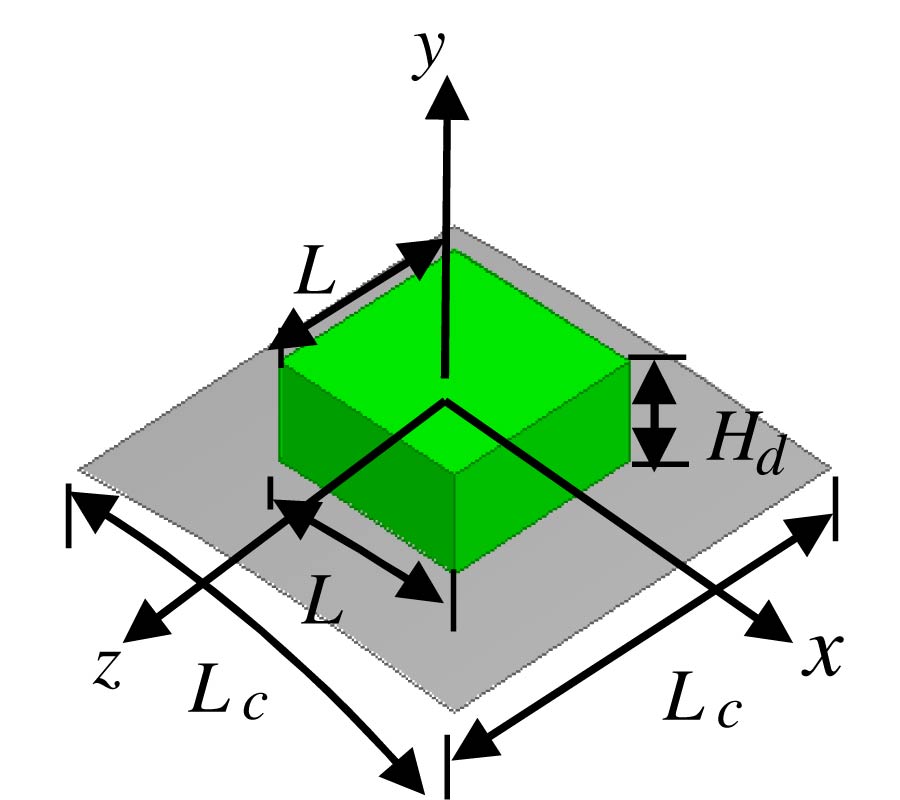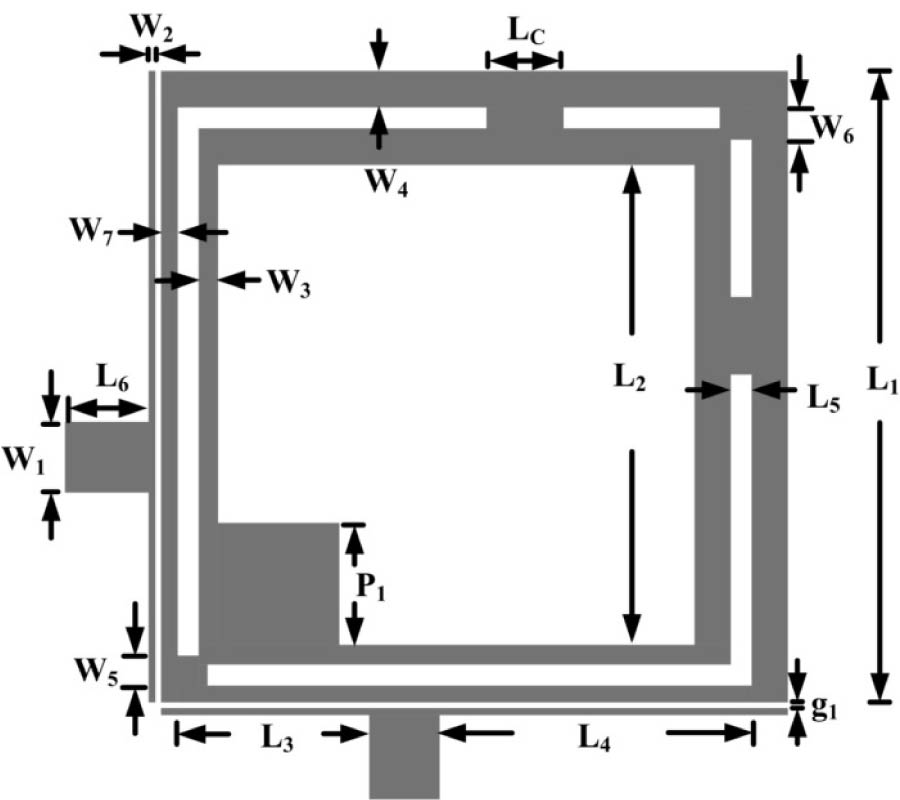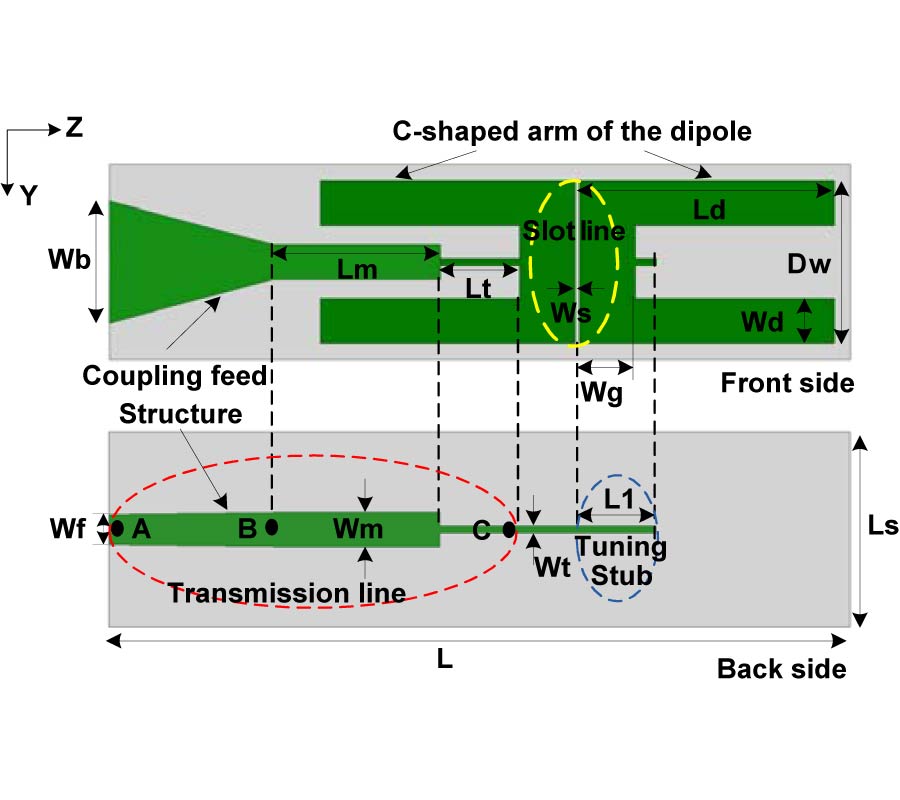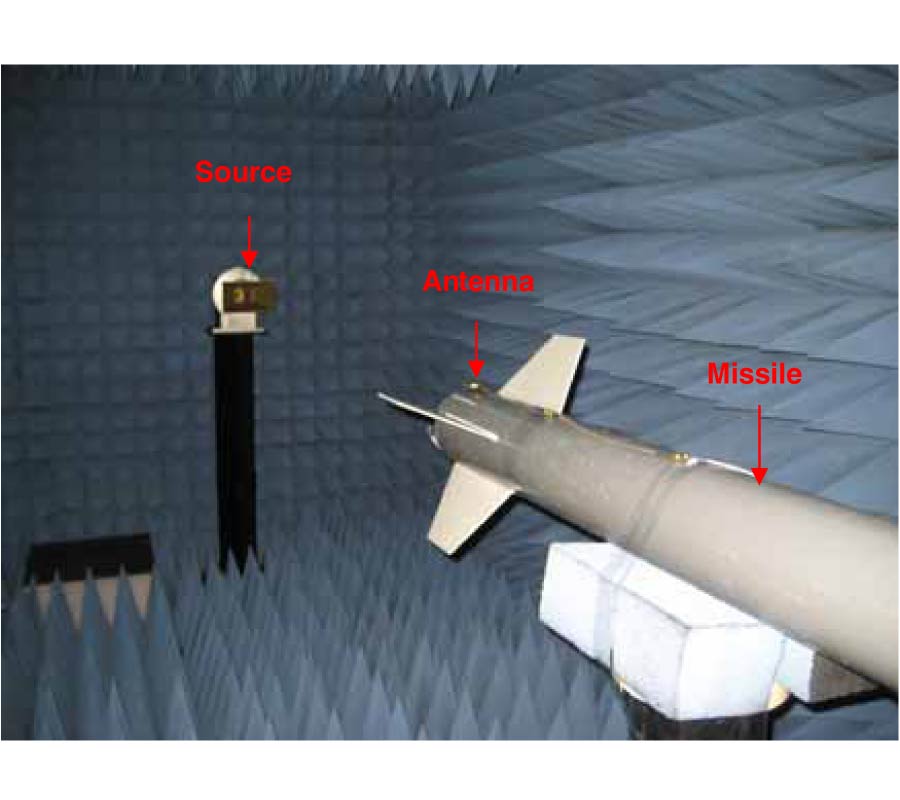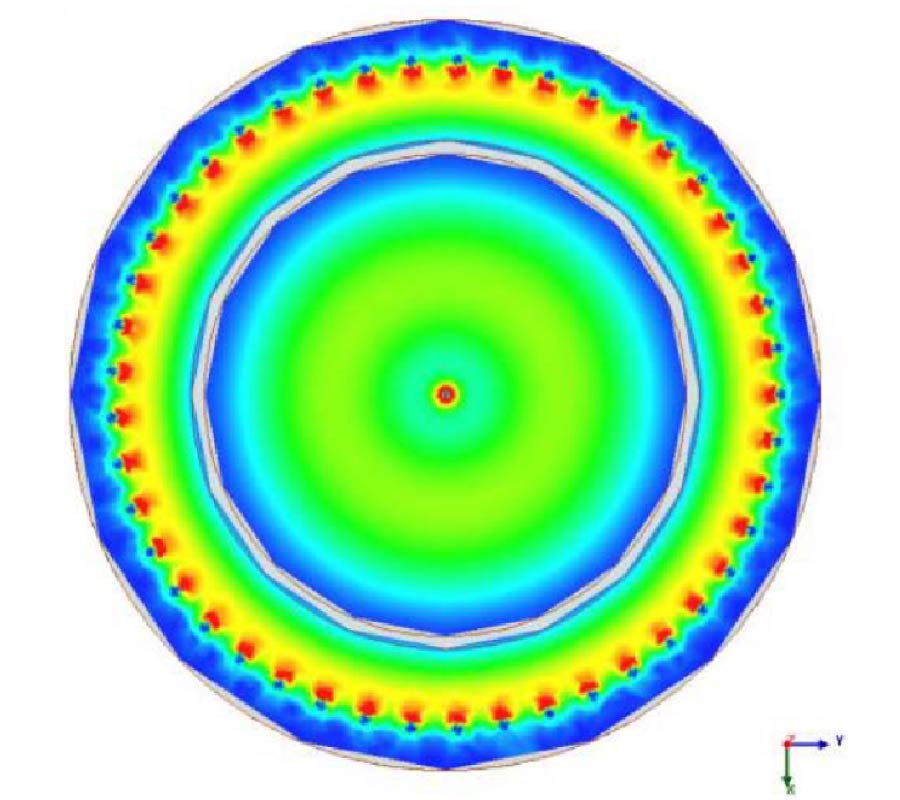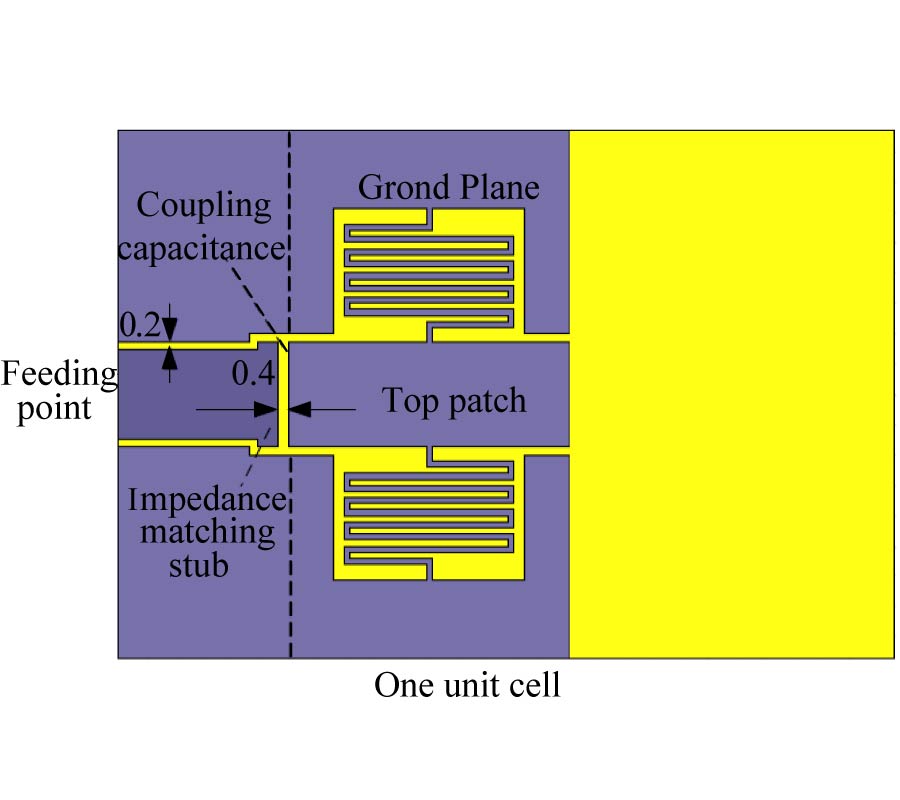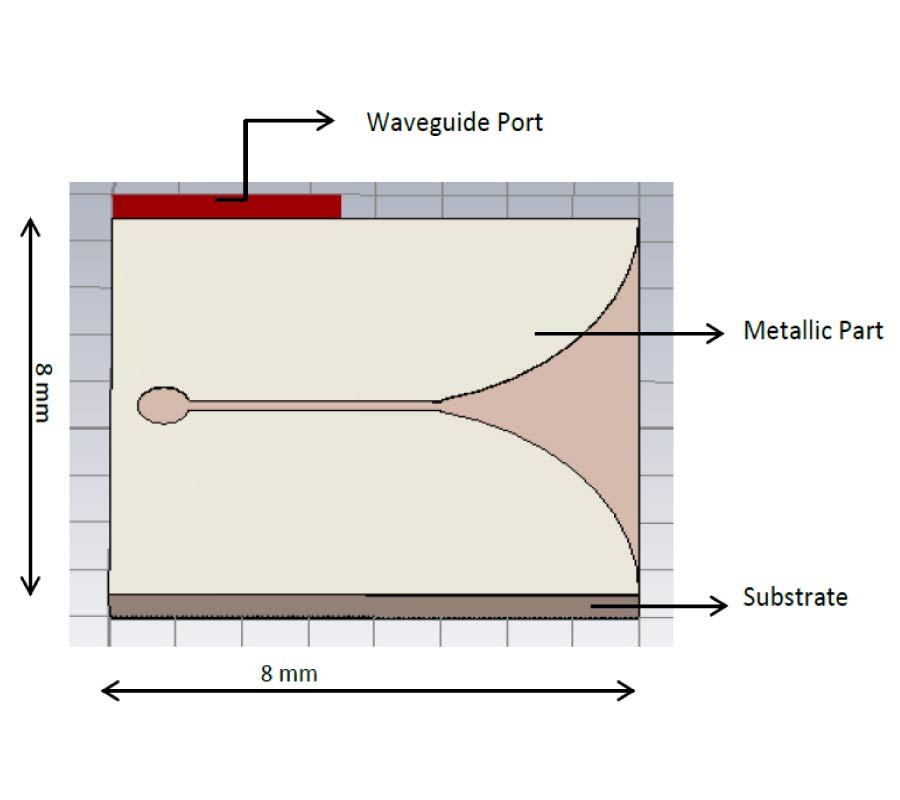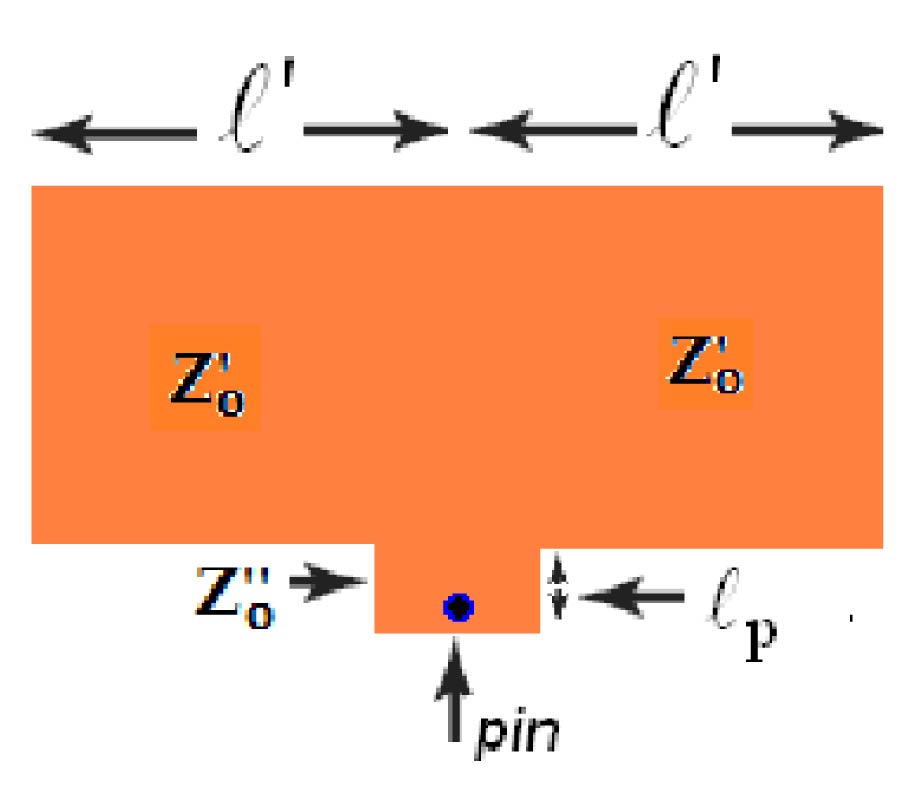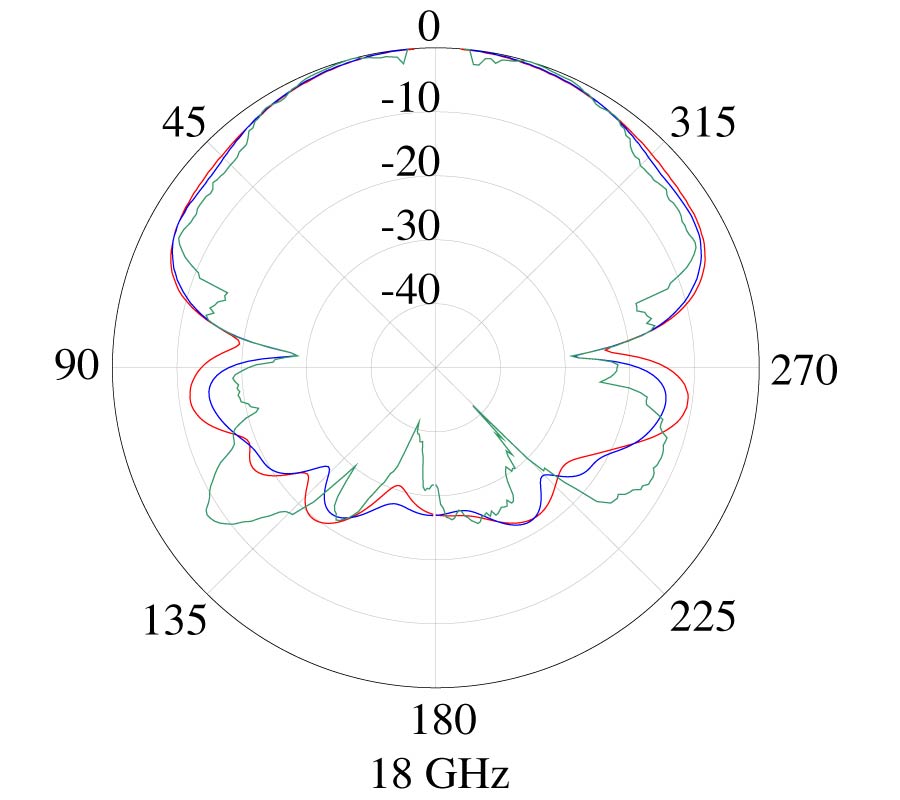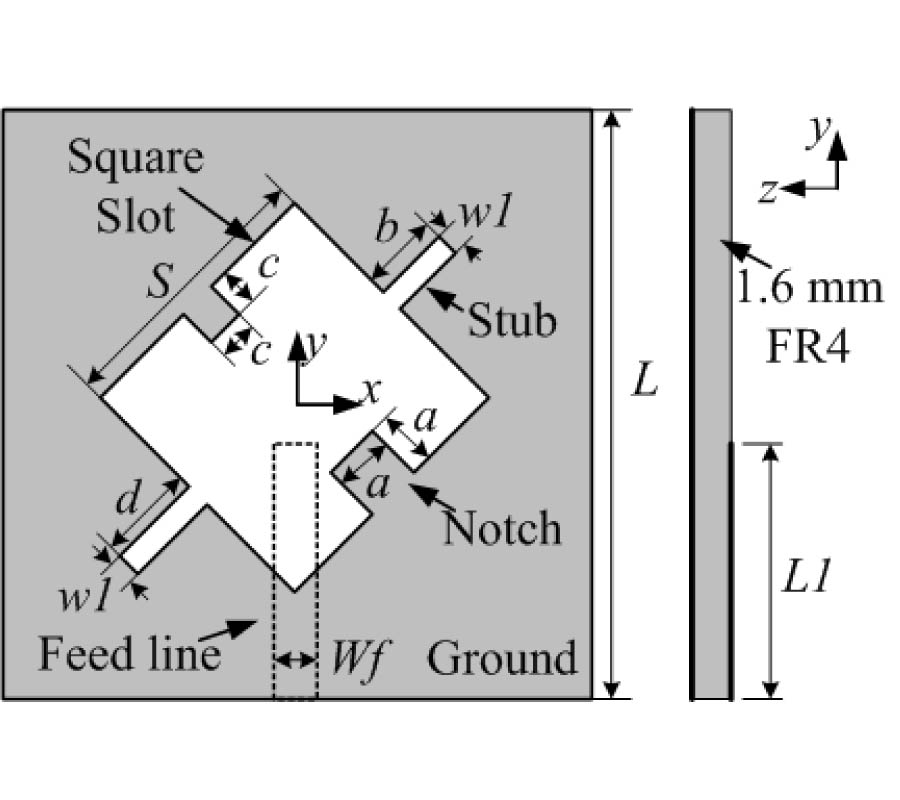Design of Diplexer with Rotationally Symmetric Structure
Sai Wai Wong,
Xiao-Han Liu,
Kai Wang,
Ruisen Chen,
Li-Sheng Zheng and
Qing-Xin Chu
This paper presents an approach to the design of novel diplexers with pairs of transmission zeros for each output port. A rotationally symmetric structure with shorted circuited stubs is proposed to achieve diplexer operation, and the diplexer exhibits a good filtering performance with a pair of transmission zeros allocated at two sides of the passbands as well. The analysis of the rotationally symmetric structure bandpass filter is also presented in this paper in detail. Moreover, the interdigital coupled-lines are introduced to improve the out-of-band performance of the proposed rotationally symmetric diplexer. In order to verify the proposed structure, first a diplexer with rotationally structure operating at 2.4/2.73 GHz with simulated insertion loss of 1.217/0.930 dB is designed and simulated, then a diplexer with interdigital coupled-lines operating at 5/5.8 GHz with measured insertion loss of 1.524/1.524 dB is designed, simulated and measured to improve the passband selectivity, and the measured results are in good agreement with simulated ones.
